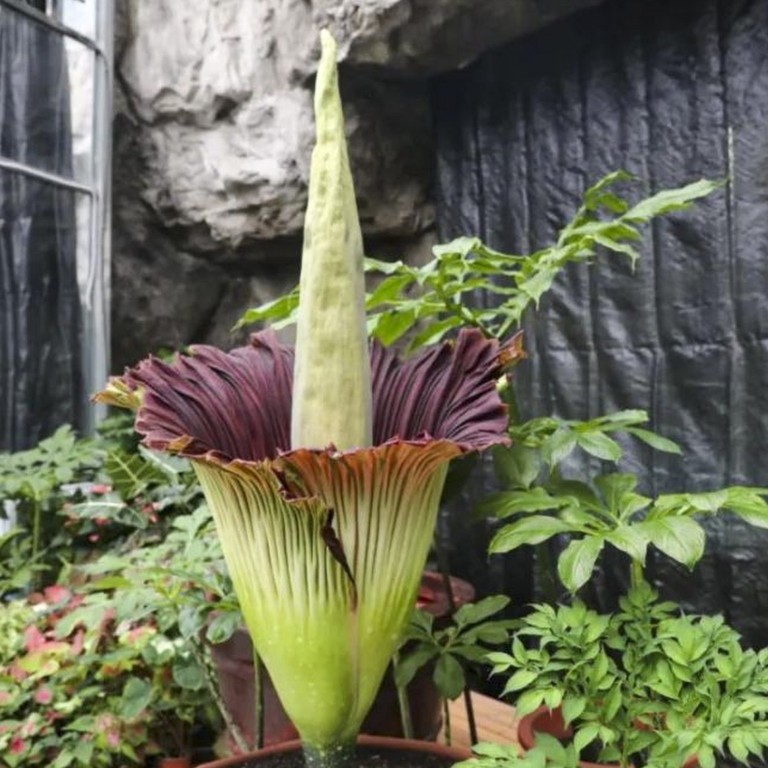
World first: three giant ‘corpse’ flowers bloom in Chinese botanical garden
- This is the first time the blooming of so many separate plants has taken place within such a short period in a greenhouse, say botanists
- Chinese researchers aim to discover species with economic value that can be modified with cutting-edge technology, such as gene editing
Three titan arums, or “corpse” plants, that blossomed in the China National Botanical Garden in Beijing this month gave humans the first opportunity to observe the simultaneous blooming of these giant flowers in an artificial environment, according to a report by Science and Technology Daily published on Wednesday.
The titan arum carries thousands of flowers on a branch that can grow to 3 metres (9.8 feet), the largest flower cluster on the planet.
The endemic plant from Sumatra must grow five to 10 years before blooming for the first time. Its flowers not only emit the smell of a rotting corpse, but can warm up to human body temperature to attract carcass-eating insects.
The blooming frequency of an individual plant is highly unpredictable, varying from a year to a decade, according to previous studies.
A corm in the Beijing garden started budding on July 6, according to the report. On Tuesday, two other corms were also blooming. The event has attracted a large number of spectators, some spending day and night watching the entire process, according to the garden.
Only about 100 titan arum bloomings have been documented around the world, with just seven previously occurring in China.
This is the first time the blooming of so many separate plants has taken place within such a short period in a greenhouse, according to botanists working in the garden.
Experts warn Chinese beauty bloggers over potentially deadly flower selfie craze
There was a triple blooming in the Chicago Botanic Garden in 2020, but those flowering branches belonged to a single corm, or underground stem.
The Chinese researchers said they were documenting the spectacle with various instruments, including heat sensors, high-definition cameras and scent samplers that could capture more than 100 different chemicals released by the flowers.
The simultaneous flowering was not entirely a coincidence, but suggested China had reached a “superb level in ex-situ conservation, scientific research and cultivation of plants,” said the report by Science and Technology Daily, which is run by China’s Ministry of Science and Technology.
“The research on the introduction and cultivation of arums is of great significance to the National Botanical Garden,” it added, without giving details on methods used by the researchers to influence the flowering, if any.
Researchers with the garden said the bulb of the giant arum contained a large amount of glucomannan, which is one of the best soluble dietary fibres found in nature so far.
“It can be widely used in food, medicine, cosmetics, the chemical industry, biology and other areas,” the report said.
The researchers were studying “how to cross the giant arum with other useful arum species of the same genus to cultivate new varieties,” it said.
They aimed to discover species with economic value that can be modified with cutting-edge technology, such as gene editing, to create new species that could improve food security, stimulate economic growth or be used in other sectors such as medicine, they said.
Scientists grow seeds in moon soil, in one giant leap for Earth plants
The giant arum is a rare and endangered plant listed by the International Union for Conservation of Nature (IUCN) as a vulnerable species on its 1997 Red List of Threatened Species.
The high demand for palm products and wood severely damaged the tropical rainforests of Sumatra. According to the Greenpeace USA, Indonesia has lost 72 per cent of its original tropical rainforest, causing direct destruction of the giant arum’s original habitat.
Many research teams around the world are studying the reproduction mechanism of the species to find ways to increase its numbers.



